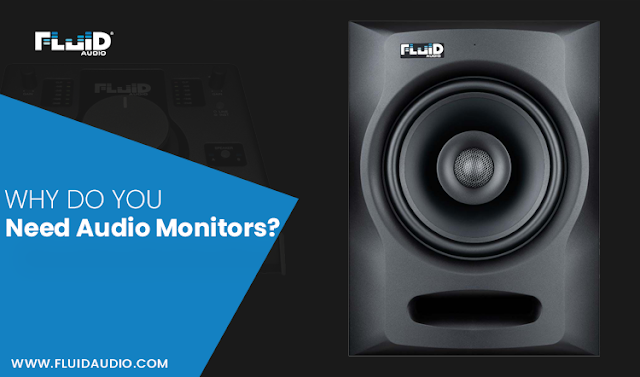Why do you need Audio Monitors?
Studio monitors are loudspeakers that are specifically designed for professional audio production applications, such as recording studios, filmmaking, television studios, radio studios, and project or home studios. They are essential in places where critical decisions regarding sound reproduction are crucial.
Studio monitors are designed to have a flat frequency response, to playback the audio recording exactly as intended without any kind of coloration or change to the sound. This is probably the #1 requirement in professional environments related to audio recording and mixing. This ensures that the Engineer is hearing the audio in its most raw and pure form (with the actual speakers adding as little coloration as possible). They are designed this way so that the audio professional may edit the music or sound. It is essential to get to know the exact sound to be able to hear the errors in the audio in order to make the desired changes.
Key Specifications for a good Studio Monitor
Here is what you need to look out for when purchasing your monitors-
Wide Frequency Range:
Since accuracy is highly prized in audio reproduction, one of the first things you will want to confirm is that they can handle the full frequency range of your recordings. Most monitor specs list the lowest frequency they handle in Hz (hertz) and the highest frequency in kHz (kilohertz). For most recording work a frequency response of 50Hz-20 kHz is adequate. Anything lower than 50Hz and higher than 20kHz will be even better for your recordings.
Total harmonic distortion (THD):
THD lets you know how cleanly a monitor can reproduce whatever audio you feed it. Most of the time the term THD really refers to THD+N, (Total Harmonic Distortion plus Noise) so when you see THD, you can usually include noise in the equation. A clean audio circuit should be very close to zero in the amount of distortion and noise it adds, i.e. about 0.001%. A poorly designed audio circuit will add quite a bit of distortion, in the range of anywhere from 0.3 to 1%.
Power in Wattage:
Although it is usually not as much of a concern for studio situations, you want to make sure you have enough power to drive your speakers and hear them at an acceptable mixing level. Professional studios or mixing bays are generally bigger, so this is more of a concern. However, generally, 50-100 watts per speaker should be plenty for a bedroom or home office-sized studio.
Near, Far, or Mid-field design:
We often hear the term nearfield with reference to studio monitors speakers. But very few people know what it means. In the simplest terms, “field” refers to how close the listener (in this case the mixing engineer) is to the speakers he’s listening to. When you hear “near field”, that means they are placed only a few feet away, providing a clear, immediate sound. The closer the speakers are to the listener's ears, the fewer room reflections and reverberations come into play in the sound of the monitors. Near-field monitors usually provide a more precise, upfront impression of the sound mix. Using a compact speaker design with relatively small speakers, near-field monitors are a good option for most studio applications. They allow the engineer to hear the sound coming directly from the speakers, rather than sound that reflects off the walls and ceiling. Whatever your studio requirements, studio monitors are a must for seamless audio production. They allow for clear, precise, and dynamic sound mixes, enabling you to identify any flaws in your audio and allow you to correct them. Unlike standard hi-fi speakers for an instant, they reveal the good and bad in the audio you listening to, allowing you to correct errors, making them the best choice when you create professional audio.



Comments
Post a Comment